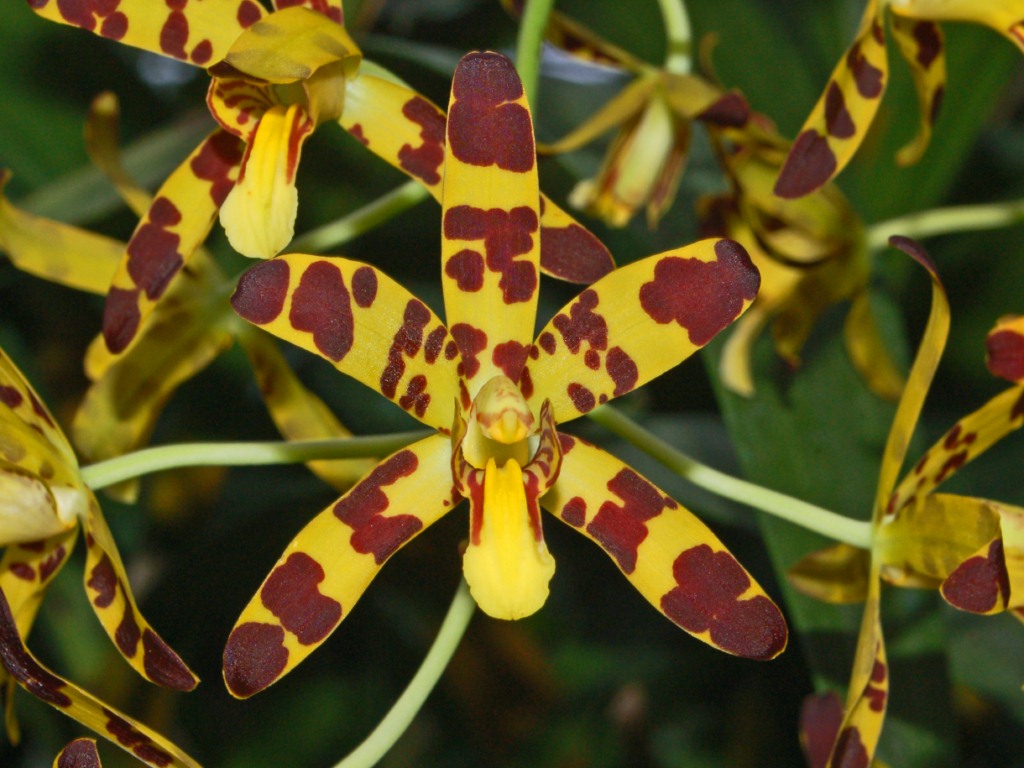Ecosystems are intricate webs of life, each species interacting with its surroundings in ways that are crucial to its survival. Sometimes, these interactions hang in a delicate balance, whereby a species has become adapted to its environment via many intriguing and often baffling interactions. In this series, we spotlight examples of remarkable adaptations which occur across WLT-supported landscapes.
Surrounded by open savannah grasslands, the eye-catching leopard orchid (Ansellia africana) sits in the forests of Mount Moroto and Mount Kadam in Uganda. With its herbal, honey-like aroma, it may come as a surpirse to learn one of its common English names is the ‘trash basket orchid’. Anchored by aerial roots to the surface of trees (where they typically grow) it has another set of roots which grows skywards. These roots form a basket-shaped ‘container’ in which leaves and other debris fall in. These then decompose and provide vital nutrients to the plant.
Like so many orchids, the leopard orchid is an epiphyte. This means that whilst it establishes itself on tree branches it doesn’t take anything from its arboreal host, thus causing it no harm. Perched up high means life’s essentials come more easily. It can access more direct sunlight and has more chances of being visited by animal pollinators that live in the canopy. Its seeds are also more easily carried on the wind which aids pollination.
The leopard orchid can weigh up to a tonne and can grow so big that some bird species like Verreaux’s Eagle Owls have been known to make nests out of the plant’s ‘baskets’. But whilst it can develop into a plant so hefty, it starts life as a seed so tiny it lacks space to store much sustenance to grow. The orchid must therefore find energy from somewhere else.
Transported on the wind, an orchid seed will often settle in the nooks and crannies of trees. Here it awaits the growth of a particular kind of fungus with which it will develop a relationship to help satisfy its nutritional needs. When the fungi and seed encounter one another, the orchid parasites the fungus to get energy. The plant will then grow into a seedling, all the whilst the fungus will get nutrients from the debris it helps to break down in the orchid’s ‘basket’.
This Vulnerable orchid species is native to tropical and southern Africa. Credit: leuli/iNaturalist CC BY-NC 4.0
The life of this orchid is impressively adapted to the scrubs and trees in Uganda’s Central Forest Reserves. The presence and integrity of these landscapes are vital to its survival. It is not found anywhere else in Uganda and is listed as Vulnerable by the IUCN in some parts of its native habitat in tropical and central Africa.
We are grateful to our partner Kara Tunga Foundation which works to safeguard the many rare and range restricted species across Uganda’s Mount Moroto and Mount Kadam Central Forest Reserves to ensure a future for this remarkable natural heritage.

